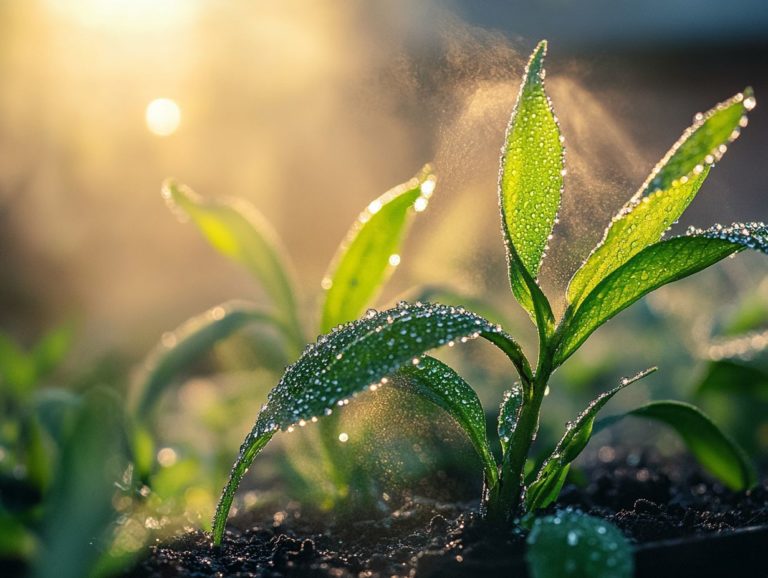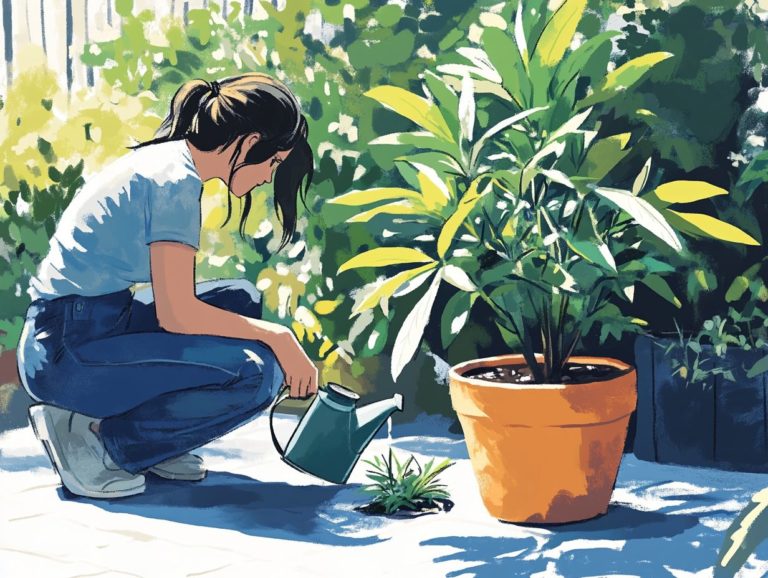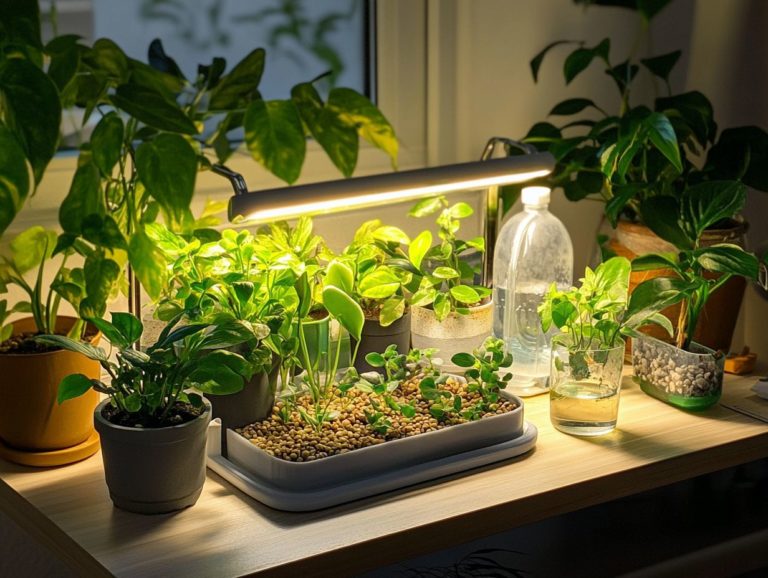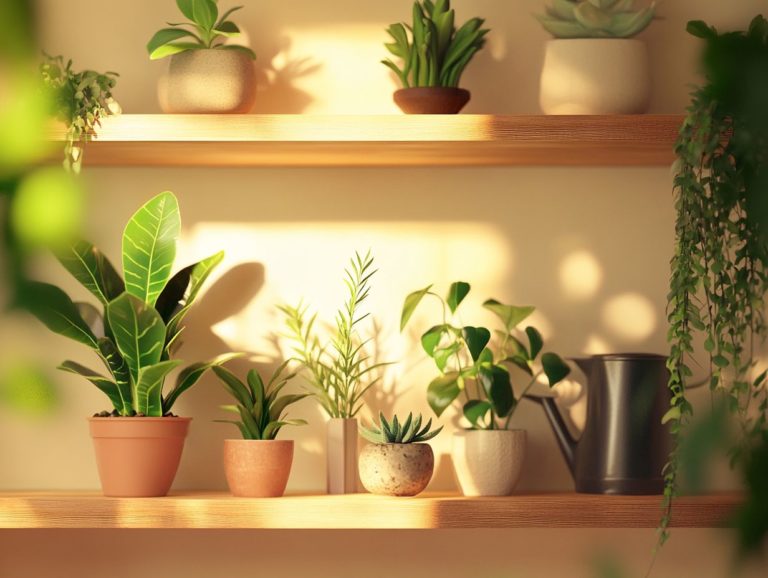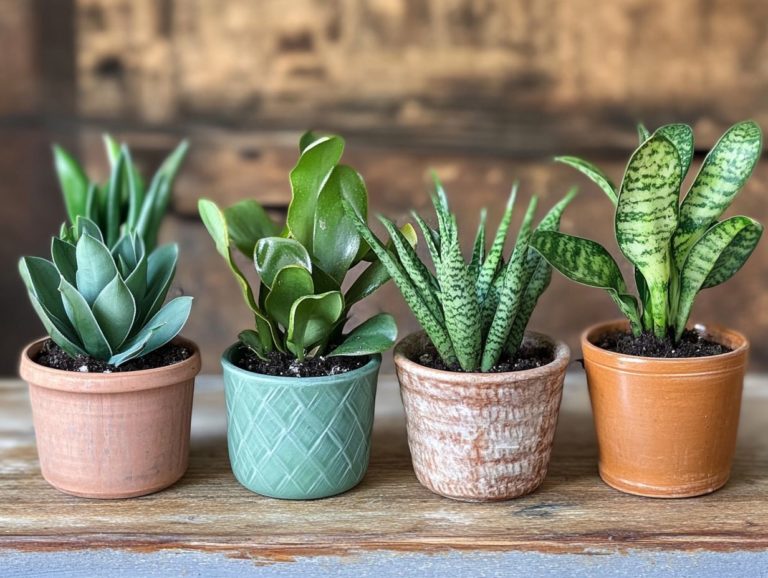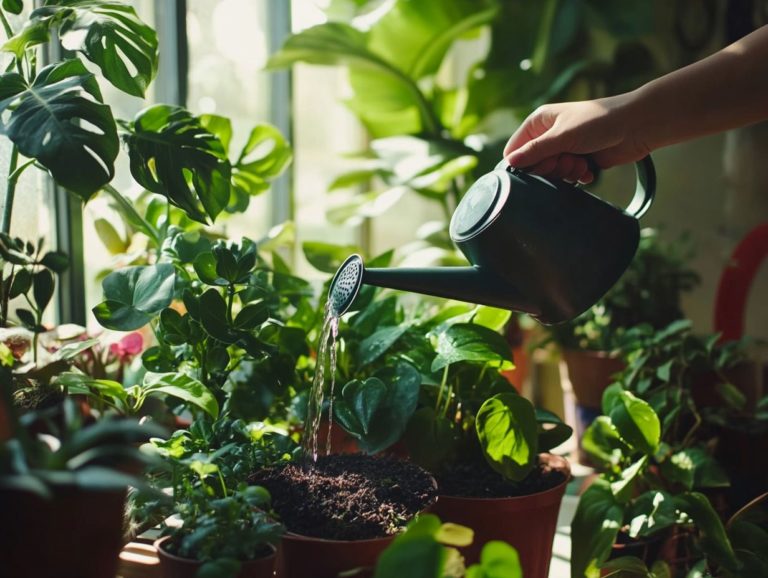The Importance of Drainage in Watering
Nurturing plants involves understanding drainage, which is essential for healthy growth. Adequate drainage fosters vitality and prevents issues like root rot.
This article explores the meaning of drainage and its numerous benefits. It highlights the signs of poor drainage and offers practical solutions for improvement.
You’ll discover the vital role of consistent watering in maintaining good drainage and overall plant health. Immerse yourself in this knowledge to ensure your garden flourishes!
Contents
- Key Takeaways:
- Understanding Drainage in Watering
- Benefits of Proper Drainage
- Signs of Poor Drainage
- Improving Drainage in Watering
- Importance of Consistent Watering
- Frequently Asked Questions
- What is the importance of drainage in watering?
- How does proper drainage benefit plants?
- What are the potential consequences of poor drainage in watering?
- What are some signs of inadequate drainage in watering that could lead to crop damage?
- How can one improve drainage in their watering routine for better water management?
- Does the importance of drainage vary for different types of plants?
Key Takeaways:

- Proper drainage is essential for healthy plant growth. It allows excess water to escape, promoting oxygen flow to roots and preventing root rot.
- Identifying and addressing drainage issues is crucial for plant health. Signs of poor drainage include wilting, yellowing leaves, and waterlogged soil. Improving drainage can be achieved with techniques like raised beds and gravel mulch.
- Consistent watering is key to maintaining good drainage. Overwatering or underwatering can lead to drainage problems. Adjust your watering frequency based on weather conditions and plant needs.
Understanding Drainage in Watering
Understanding drainage in watering is vital for effective water management in agriculture. It involves removing excess water to enhance soil moisture levels and safeguard crops from erosion and pest issues.
Well-designed drainage systems, whether above ground or below, are crucial for maintaining crop health and optimizing yields. They also support sustainable farming practices.
Farmers like Rick from Preston Trail Farms often work with drainage experts to create efficient designs that effectively manage irrigation runoff. This prevents water pooling and nutrient loss while significantly improving overall drainage efficiency.
What is Drainage?
Drainage involves removing excess water from soil or land using systems like surface drainage and below-ground drainage. These systems are essential for enhancing agricultural practices.
They prevent waterlogging, which can severely hinder crop growth and soil health. With proper drainage, you can optimize planting schedules and maintain consistent moisture levels in the soil.
By implementing drainage systems thoughtfully using ditches and trenches for surface water or perforated pipes for below-ground flow you can significantly improve water quality by reducing nutrient runoff. This careful management supports sustainable farming and boosts crop yields while helping maintain ecological balance.
Benefits of Proper Drainage
Proper drainage systems offer numerous advantages, from fostering robust plant growth to preventing root rot and improving overall crop health. By effectively managing water retention and minimizing nutrient loss, these systems ensure your crops receive just the right amount of moisture.
This safeguards them against water saturation and potential damage. Ready to see your garden thrive? With effective drainage practices, you can optimize your land’s productivity while championing environmental protection.
Healthy Plant Growth
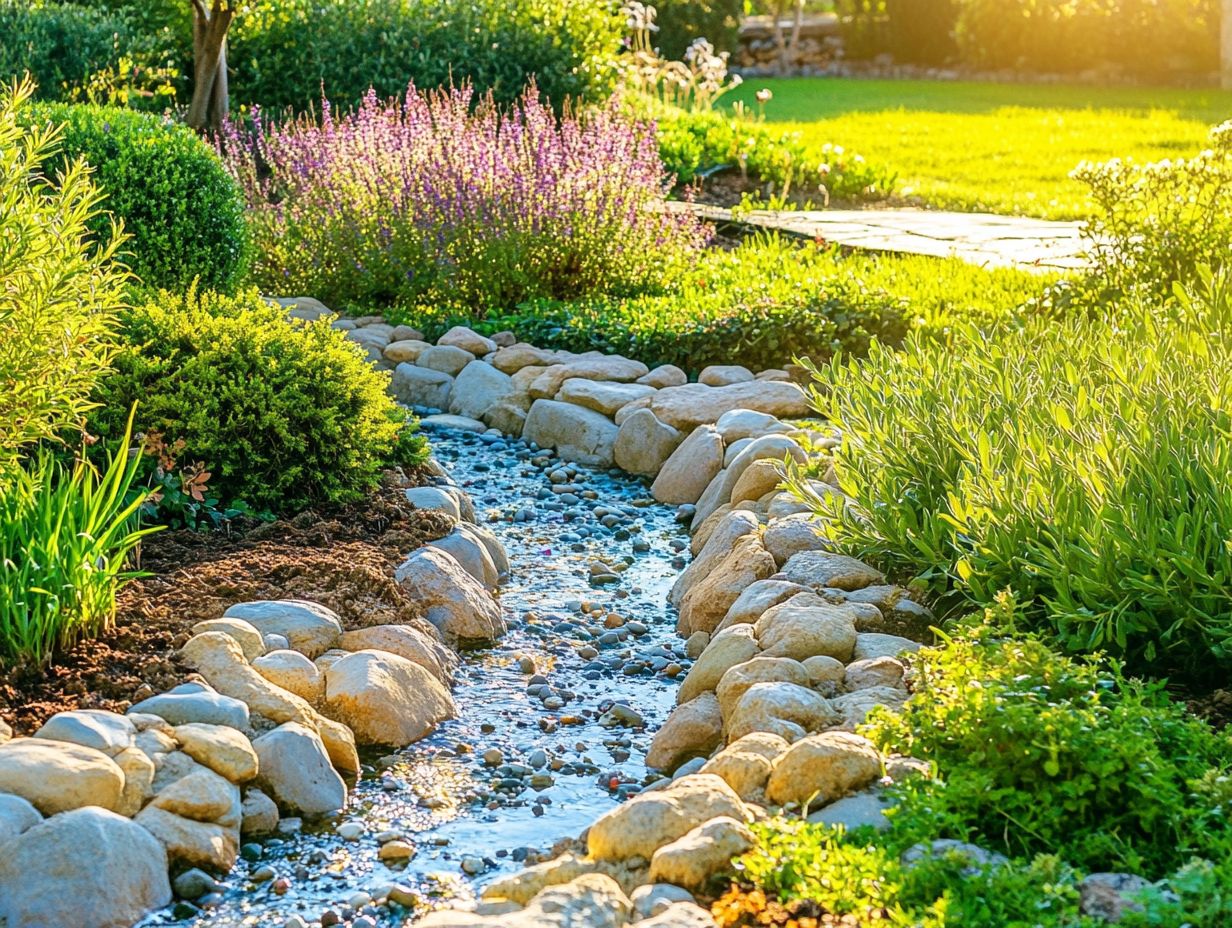
Healthy plant growth depends on effective drainage solutions that manage soil moisture levels. This creates the ideal environment for optimal crop yields.
These solutions prevent waterlogging, which can lead to root rot and hinder nutrient uptake. By maintaining balanced moisture levels, plants can take in essential nutrients like nitrogen, phosphorus, and potassium, crucial for growth and development.
The balance of air and water in the soil affects root health. Well-drained soils improve aeration, allowing roots to breathe and thrive. Consistent moisture and the right nutrient levels foster strong, resilient crops, leading to increased productivity and sustainable agricultural practices.
Preventing Root Rot
Preventing root rot is essential for crop health. Effective drainage techniques are critical for managing water saturation and ensuring soil stability.
Root rot often occurs when water accumulates around the roots, causing oxygen depletion and inviting fungal growth. Poor drainage, often due to compacted soil, low-lying areas, and inadequate systems, can trap water and create a breeding ground for pathogens.
Integrating solutions like installing French drains a type of drainage system that helps remove excess water using raised beds, or applying soil amendments to improve aeration can significantly reduce the risks of waterlogged conditions. These strategies promote robust plant growth while protecting your crops from root rot.
Signs of Poor Drainage
Recognizing the signs of poor drainage is vital for addressing issues that could harm your crops. Water pooling, soil erosion, and nutrient loss are all red flags that can negatively impact agricultural productivity.
Being vigilant about these indicators can help you safeguard your harvest and boost your overall yield.
Identifying and Addressing Drainage Issues
Identifying and addressing drainage issues is key for achieving optimal drainage efficiency and ensuring overall agricultural success. It s exciting to discover how a comprehensive approach can transform your farming!
Start by closely monitoring soil moisture levels, as they can reveal potential drainage problems below the surface. Regularly assessing crop health through visual inspections or using drone technology provides early warnings of waterlogging or nutrient deficiencies due to poor drainage.
Installing soil moisture sensors allows for timely interventions, helping you decide when to adjust irrigation or drainage. Incorporating practices like contour plowing and creating buffer strips can effectively reduce runoff and enhance your water management.
By proactively addressing these challenges, you can maintain and even improve agricultural productivity, ensuring the long-term sustainability of your farming practices.
Improving Drainage in Watering
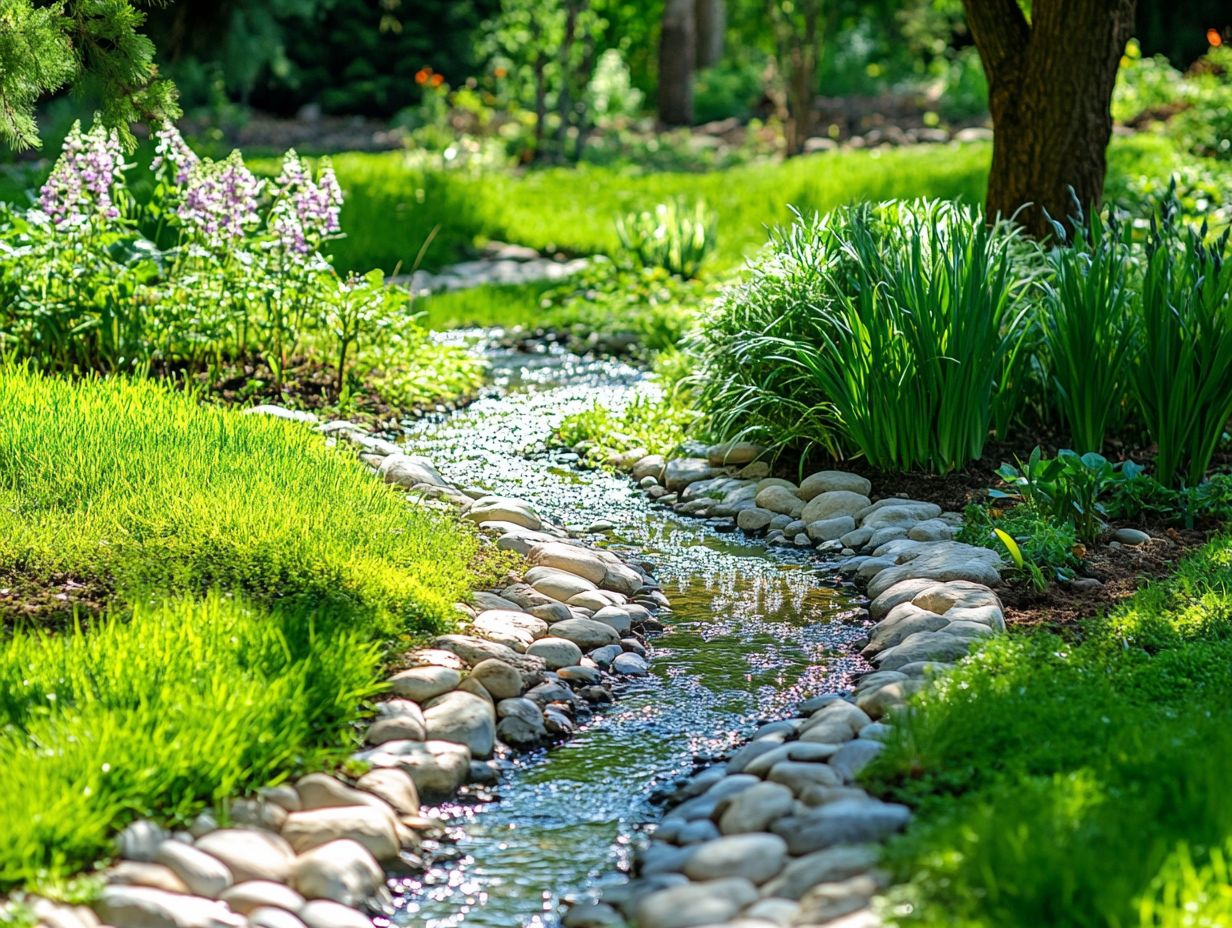
Enhancing drainage in your watering practices means embracing advanced techniques and designs that improve your drainage infrastructure. By doing so, you ensure effective water management while maximizing agricultural productivity.
Effective Techniques and Tools
Using effective drainage tools like GPS for planning and consulting drainage experts can greatly boost your farm s productivity and sustainability.
Implementing advanced software for modeling water flow and incorporating soil moisture sensors (devices that measure moisture levels in the soil) provides real-time data to inform your management practices. This proactive approach prevents waterlogging and optimizes crop health by ensuring adequate soil moisture levels.
Implementing trenching systems and subsurface drainage tiles enhances your water management capabilities by efficiently redirecting excess water. Integrating drone technology offers a bird s-eye view of your landscape, enabling targeted interventions where they are most needed.
Leverage the expertise of agronomists and specialists to refine your drainage strategies, ensuring that your specific field conditions are met and that your farm maximizes the benefits of your investments.
Importance of Consistent Watering
Consistent watering is crucial for maintaining optimal moisture levels in the soil. This practice directly influences drainage and overall plant health, ensuring that your crops receive the hydration they need without the risk of water saturation.
By adhering to this principle, you cultivate a thriving environment for your plants to flourish.
Impact on Drainage and Plant Health
The impact of consistent watering on drainage and plant health is remarkable. By implementing effective water management practices and appropriate drainage solutions, you create optimal growing conditions for your plants.
Giving the right amount of water fosters healthy growth and keeps moisture levels balanced in the soil. This preventative measure helps avoid issues like root rot and nutrient leaching. Proper drainage is essential; it allows excess water to escape while retaining enough moisture for your plants to thrive, ensuring that nutrients remain accessible. Understanding the role of soil in watering is key to maintaining this balance.
As a farmer or gardener, prioritize integrating efficient drainage techniques like bio-drainage systems (a method that uses plants to manage water levels) or contour plowing. These strategies mitigate waterlogging and enhance soil quality. Additionally, understanding why consistency is key in watering can further contribute to increased plant vitality, ultimately leading to better yields and sustainable agricultural outcomes.
Frequently Asked Questions
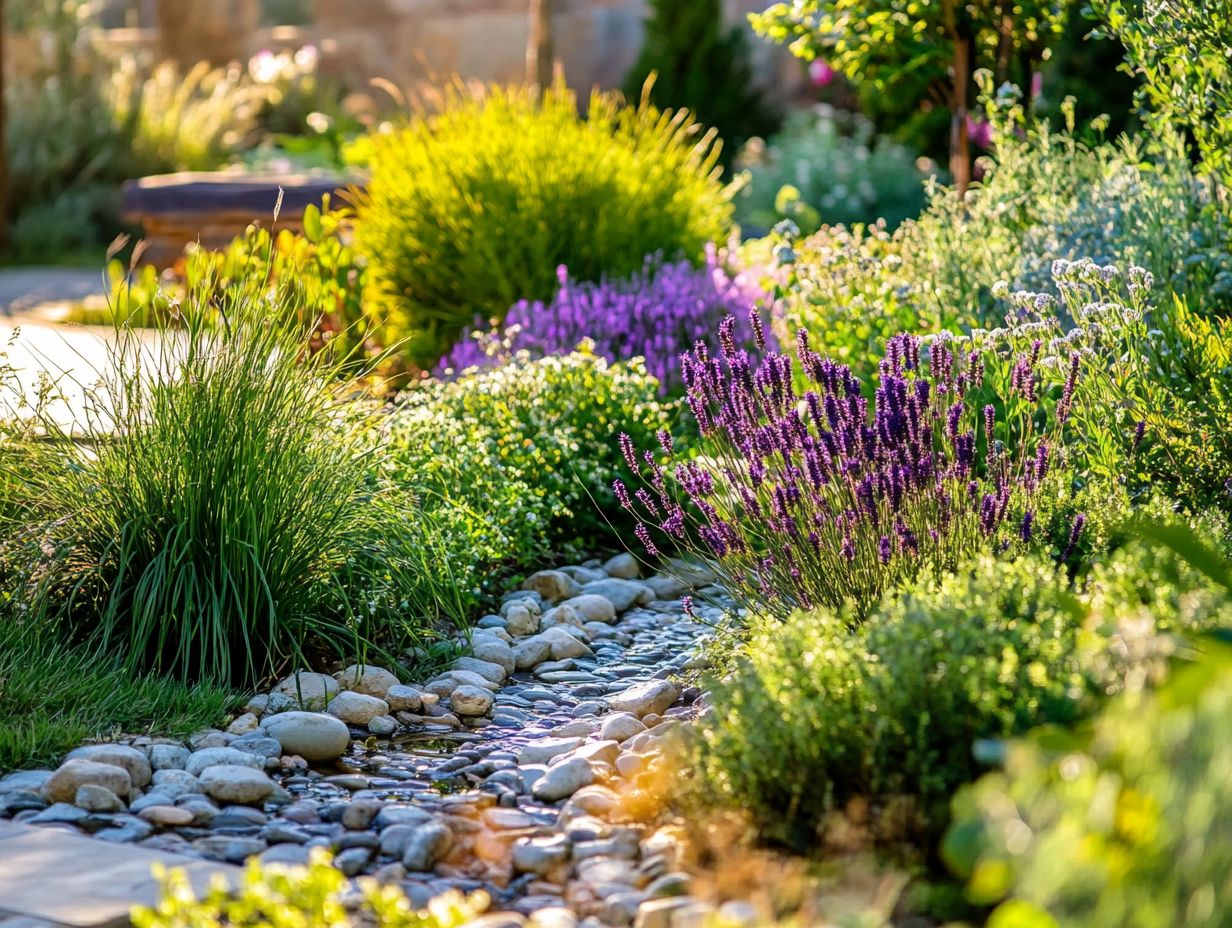
What is the importance of drainage in watering?
Drainage is crucial in watering because it helps prevent waterlogging, which can suffocate plants and lead to root rot. Effective drainage management also prevents soil erosion and water loss.
How does proper drainage benefit plants?
Proper drainage allows excess water to drain away from the roots, ensuring they have enough oxygen and preventing waterborne diseases while contributing to improved water quality.
What are the potential consequences of poor drainage in watering?
Poor drainage can lead to stagnant water, attracting pest problems and promoting harmful bacteria and fungi that can damage plants.
What are some signs of inadequate drainage in watering that could lead to crop damage?
Signs of inadequate drainage include yellowing or wilting leaves, stunted growth, and a foul odor coming from the soil.
How can one improve drainage in their watering routine for better water management?
Improve drainage by using well-draining soil, implementing drainage solutions, creating drainage holes in containers, and avoiding overwatering.
Does the importance of drainage vary for different types of plants?
Yes, different plants have different water requirements. The importance of drainage may vary depending on the plant’s needs. Some plants may require more frequent watering with good drainage, while others may thrive in soil that retains more moisture, thus reducing water saturation and drainage problems.

